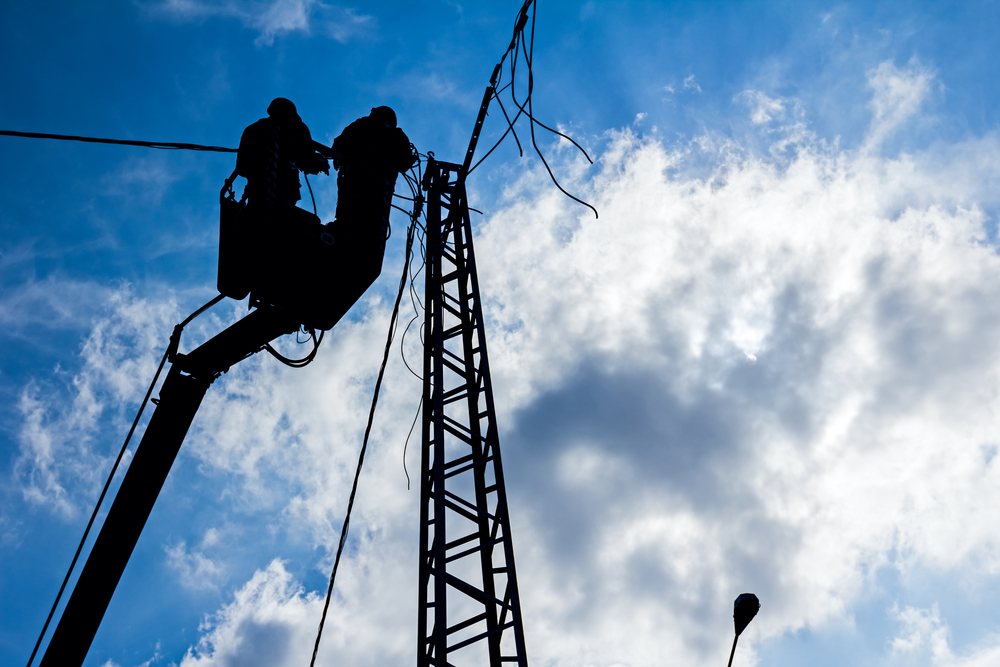Maine Residential Electric Rates

The State of Maine began consideration of electric deregulation in 1995, but it wasn’t until 2001 that the energy marketplace really opened. What that meant in practice for Mainers was that they were free to switch their electricity supply from a state utility company to a competitive retailer. The main driver is, of course, the price – the average residential electric rate in Maine is $0.207 per kilowatt-hour, as opposed to the national U.S. average of $0.15 per kilowatt-hour.
Currently, residential and commercial customers of two power utilities are able to shop for electricity rates – CMP and Emera Maine – covering approximately 60% of the territory. If you decide to switch, these utility companies will still be responsible for safely delivering electricity to your home. However, when it comes to the electric rate – you have the freedom to choose.
Compare Electricity Rates in Maine
The Maine Public Utility Commission tries to empower the residents to use the electric choice. It publishes a list of licensed electric suppliers in the state, but currently, there is no official state resource for the Mainers to compare the available rates and make the switch.
That’s why we are here. On our website, you can compare rates in Maine by simply entering your zip code. We carefully review all retail suppliers to also include information about customer service contact details, bill payment options, and little extras that they offer to customers.
Maine Energy Market Data
Maine is a US state with 1.33 million residents. It produces around 14.4 TWh (1 TWh = 1 Billion kWh) of electricity annually and consumes most of it – around 11.6 TWh of electric energy per year. It has a total of 103 power plants (1% of the US total) and has almost 2,000 miles of electric power lines. The country has one coal-fired power plant, 11 oil power plants, eight natural gas plants, 58 hydroelectric dams, and 25 renewable energy plants, including large-scale solar farms and wind turbine parks.
The state has a very reliable energy delivery service, with as little as 24 outages in the 17-year period from 1992-2009. The average electric rate in Maine is $0.207 per kWh, and use as little as 550 kWh per month – resulting in an energy bill of just over $110. The biggest ways to save on your energy bill are insulation and modernization of major appliances, especially considering that the average Maine home is 42 years old.
Utility Companies in Maine
Each of the utilities has to publish its residential Price to Compare or standard offer – the electricity rate for the supply portion of your bill. You can then compare this rate with other competitive energy plans, offered by alternative electricity suppliers.
Central Maine Power

This utility company serves more than 620,000 electricity customers in an 11,000-square-mile service area in central and southern parts of the state.
- Customer service number: 1-800-456-5153
- Current standard electricity rate: 11.82 ¢ / kWh
Emera Maine

The power company service territory spans 10,400 square miles in two service districts – the Bangor Hydro District and the Maine Public District.
- Customer service number: 1-207-973-2000
Energy Deregulation in Maine
Maine has a somewhat energy-deregulated market. In reality, the state forced energy utilities to get out of their energy generation business and sell their generation capacities. The Restructuring Act of 2000 also allowed energy providers to enter the market and established what we would today recognize as energy market deregulation. This has created an atmosphere where the energy providers (with special permission) compete with each other for their share of the cake – by introducing lower prices, offering better customer service, and a more diverse energy plan offer.
Energy Plans & Products in Maine
Energy plans are like shoes. One size does not fit all. Navigating through complex information about electric rates can be confusing and can ultimately deter you from shopping for a better deal. Below is all you need to know about the different energy products that energy companies offer to Maine residents:
| Plan | Description | What's Good? | What's Bad? |
|---|---|---|---|
| Green / Renewable Energy | On this plan, your supplier will match the energy you consume by buying an equal amount from renewable generators |
|
|
| Variable Rate | Your per-unit gas and electricity costs can vary at the discretion of your supplier |
|
|
| Fixed Rate | Your unit price for gas and electricity will remain the same for the duration of the plan |
|
|
| Renewable Energy Credits (RECs) | By purchasing 1 REC, you purchase the environmental benefits of 1MWh of renewable energy generation | Reputational gains and compliance targets for businesses with a mandated renewable obligation | There are no real downsides -RECs are fairly cheap and the system is secured and tightly monitored. |
Fixed Rate Plan
Fixed-rate energy plans deliver reliable monthly bills to both residential and business customers. Commercial customers will always pay less per kWh with these plans than residential customers can, simply due to the fact that they use much less electricity and that they get to pay a lower price for that. In reality, fixed-rate plans are a great option for all who would like to be paying a stable (although somewhat higher price than with variable energy plans) price and who would like to have more control over their energy bills. There are dozens of fixed-rate plans available in Maine, and they are always our recommendation.
This is because you will always pay a fixed rate for your energy, irrelevant of fluctuations in use. Your electric bill will change with the energy use in your home, but the price per kWh will stay the same throughout the contract term, even if there are changes in the wholesale energy market or if the inflation is higher than it should be.
Variable Rate
Variable-rate energy plans offer a variable rate to all Maine consumers. They are likely to offer a lower rate per kWh than fixed-rate plans, but since the rate is not fixed, it could go up in the near future. Residential rates in Maine are not high enough for us to recommend you choose a variable rate plan. The thing is that all the money that you may save with a plan like this can easily be lost as the fuel pricing change and the providers have to start charging more on your electric bill.
Variable rate plans generally offer lower energy rates during the spring and the autumn, as the consumption is lower and there is more clean energy coming from hydro plans. However, during the winter and the summer, your energy supplier will start charging extra, as the demand increases and the power supply reduces. This increase in how much you are charged will influence if you can save money or not. The Texas winter blackout of 2021, for example, saw $17,000 in energy bills.
Prepaid Plans
While fixed and variable-rate plans are great for families and all who would like to purchase a long-term energy plan, prepaid plans are great for those who want maximum control over their expenses or for those who move a lot and do not want a year’s worth of contract term. With prepaid plans, you could purchase electricity for a month or two even, making these the perfect solution for a student or a renter as well, as you will not need to pay for electricity when you are not in the apartment you are renting.
In addition to this, you should know that prepaid plans also do not require a deposit or credit check since there is no contractual obligation. You can simply purchase as many kWhs or as many credits as you would like. What you need to do to make sure you do not run out of electricity by the end of the month is to do an energy bill audit and see how many kilowatt-hours you use every month and purchase a corresponding amount of credits. These plans are typically called no-deposit energy plans as well.
Business Energy Plans
If you are both a homeowner and a business owner, you will need to consider purchasing a business energy plan or a commercial energy plan. This way, you can purchase a cheap electricity plan for your business and run your business for very little money. These plans are never available online, but you should rather find an energy broker and see what kind of commercial energy plan they can provide for you. Alternatively, you can contact each power provider in your ZIP code area and see what plans these energy providers may offer to you.
Time of Use Plans
Time-of-Use plans is another option that increases the energy choice you have. The supply rates with these plans do not vary based on energy production or even energy use but rather on the time of the day. In general, you’ll spend a lower rate whenever there is a drop in energy use. This is typical during the night and the weekend when most businesses are closed. On Monday, or in the mornings, as the energy usage starts to rise, so will the prices.
The biggest advantage that time-of-use plans have over variable-rate plans is that they offer a lot of security to most customers who use them, and they give you the exact timings and energy prices for each period of the day. This way, you can plan your energy use, based on factors such as your free time and energy cost. You should be careful that the energy usage during the free periods of the day does not exceed energy use during the paid energy periods, or you will have to pay for that use as well. Being smart about how and when you use electricity can help you reduce your average electric bills.
Alternative Energy Options in Maine
Maine has tremendous potential when it comes to green power. In 2018, about three-fourths of the state electricity net generation came from renewable sources. With such a high share of green power – Mainers have not one but a few options to green up their energy usage:
 | Maine Green Power - The Public Utility Commission plays a key role in promoting the adoption of renewable energy - its official Maine Green Power program allows you to sign up a portion of your bill to purchasing Renewable Energy Certificates (RECs). These certificates are proof that energy was generated from renewable resources, such as wind, hydro and biomass and can be used to offset your carbon footprint. |
 | Choose a green energy plan - In 2019, the state governor signed in a bill, mandating that 80% of the energy generated in Maine will come from renewable sources by 2030. Power suppliers had to comply and as a result, Mainers are now able to switch to partially or fully green energy plans with competitive prices. |
 | Community solar projects - Anyone who pays an energy bill in Maine (businesses or homeowners) can be a part of a community solar project. These projects leverage economies of scale and state incentives to give more people access to cleaner, cheaper energy without the upfront investment costs. |
Renewable Energy Plans
Renewable energy plans, or green energy plans, offer energy prices a bit higher than the local average but will help you decrease your carbon footprint. These plans work two ways: by providing clean energy to you straight from a clean energy plan or by purchasing carbon offsets in your name. Simply choosing a green energy plan is the easiest way to help mitigate climate change without installing solar panels.
In many areas, a solar system array may still be a much better option, especially if you would like to gain energy independence. All US states allow you to produce electricity on your roof, and this is a great way for energy suppliers to get additional energy sources, as all the electricity you do not use will be sent to the utility company and other users if your state supports net-metering. This way, you depend less on the utility company, help reduce the effect of climate change, and can have peace of mind in knowing that you pollute less than an average US citizen.
Is Switching Providers Worth It?
In most cases, yes, switching providers is worth it. This can be beneficial for both your wallet and your impact on the environment. However, you should know a few things before making the switch: your energy use, energy habits, the current electricity prices you are paying, as well as the future plans that you would like to pay. Let’s break it all down, and let’s pay attention to the fact that you can only switch your energy provider, never your utilities (the company maintaining the power lines).
Your energy use is important because knowing how much energy you use will influence what energy prices you should be paying. In most cases, you should be able to estimate the energy use based on your previous monthly bills. With this in mind, you can then consider the three-tier energy pricing that comes with all energy plans, and you will be able to make the right choice. Never forget that estimating energy use wrong can lead to significant upcharges to your electric bill.
Energy habits, on the other hand, are good to know if you plan on purchasing a time-of-use electricity plan. If you have a weekend laundry day, if you use most electricity past 7 PM or 8 PM in the evenings, or if you turn on major appliances only during the night, this is a great thing to know, as with these plans, you will be able to save a lot on your electric bill by reducing the effective per kWh prices you will be paying with these electricity plans.
When it comes to the price of electricity (even in any given month with a variable-rate plan), it is always good to know that most plans have an early cancellation fee or an early termination fee that you should consider. Most states cap this fee off, but the fee may well add over $100 to your final bill and may cancel out several months of savings you will be paying with a new, lower rate. If your contract terms state this fee, please count it into your possible savings to avoid any issues with the old energy provider.
How to Choose the Right Plan for Your Home?
When considering a switch to a different energy provider, it is crucial to understand the power of choice and to the into account all the necessary factors before making a change request. This way, you will be protecting your time and money and will be able to opt for a better energy plan. Some of the things you should focus on when switching to a new energy plan are:
- The electricity type – renewable or nonrenewable,
- Energy plan type – fixed, variable, prepaid, etc.
- Contract term – energy plans can be purchased for as short as 1 month or for as long as three years,
- Any incentives and time-based rates,
- Additional energy products, such as home energy audit, Google Nest, or smart lightbulbs,
- The cost of energy per kWh – bear in mind this does not mean that the cheapest energy rate will cost you the least.
Analyze Your Current Costs
You should start by analyzing your current energy costs. This will help you determine if a new energy plan is beneficial for you or not. You should examine your nominal energy rate, as well as the effective energy rate, which is available when you divide the ‘amount to pay’ by the actual energy use. This will help you gain a better understanding of how much you will be paying: switching to a plan with a lower rate but higher fixed expenses may even end up in a higher energy bill.
Review Your Current Contract and Plan
Next, you should review your current contract and plan by evaluating the energy rate, fixed expenses, and any savings you may be making, such as during the free nights and weekends. You should check whether your monthly plan allows for some savings if it allows switching to clean energy, and also whether it offers any perks or benefits that can help you save on the energy bill that you may not have used so far. You should compare all these factors with every new energy plan you may be considering on Electricrate.
Compare Energy Plans
Once all this is done, you should compare the electricity plans you’ve found. In some areas, you will have hundreds of options. To avoid a headache, you should use filters Electricrate offers to narrow down your search and make sure you only get to see the plans you are actually interested in. Simply enter your ZIP code and use the filters to see only fixed-rate or renewable energy plans, if this is what you’re looking for.
Getting to Know Your Maine Electricity Bill
Before you explore other plans, it is the best way to do so by analyzing your current electric bill. Typically, there will be multiple different charges you pay every month. While 1-2 is for the energy provider, the remaining are for the supply company. Whichever company you choose, you will be paying the same amount for the supply charges. For this reason, you should always read the fine print and understand exactly what you will be paying for. Let’s break these down.
Utility Delivery Charges
The utility delivery charges usually consist of two parts – fixed and variable charges. You will always pay both, so make sure to understand which is which and how high they are. A low variable charge (which is the energy price you pay per kWh times the number of kWhs you have used in any given month) does not mean a lower energy bill – especially as the fixed charge may be very high. Most fixed charges are anywhere between $5-$20, so you may want to check this as well.
Supply Charges
Your electric bill also includes supply charges. These also include a fixed and a variable part and you will be paying both (and at the same rates) irrelevant of which power provider you choose. Later on, we will cover the difference between the two companies so that it is clear what is it that you are paying. In general, the fixed part is the same every month, while the variable part is in direct correlation with your energy use – the more energy you use, the more you pay as the variable supply charge is calculated based on the number of kWhs you have used in a specific month.
Factors that Affect Electricity Rates
As you browse energy plans on Electricrate, you will notice that the price of electricity is never uniform. Quite on the contrary, while some plans can charge as low as $0.10 per kWh, some others will charge upwards of $0.20 per kWh. Where does this difference come from? Well, the prices of electricity you pay with your energy plan depend on several factors. These include:
- Fuels,
- Power plant prices,
- Local transmission and distribution system charges,
- Local or regional area regulations, and
- Weather conditions.
All these factors influence the price of electricity you will have to pay at the end of every month. This is the reason that we do not recommend signing a contract for a variable-rate plan, as very distant events can significantly increase the effective electricity rate you have to pay on your energy bill. Fixed-rate, long-term energy plans are the best option there is when it comes to long-term energy price security.
Fuels
Fuel prices impact the cost of electricity because their prices fluctuate day by day. Geopolitical events, political decisions, supply and demand chain changes, and many more factors can influence the wholesale market fuel prices. The fuels typically used in a power plant to generate electricity include natural gas, oil, and coal (all fossil fuels), with hydrogen likely to join the holly trio of energy generation in the upcoming decades.
Power Plant Prices
Powerplants are expensive to build. They charge for the electricity they produce, and this way can help pay themselves off. In general, energy plant prices are in the billions of dollars, especially when it comes to nuclear power plants. However, as technology develops, we can expect to see a reduction in prices. Furthermore, as energy production becomes decentralized, we can expect to see another drop, as many homeowners in the US can generate their own power, either by using a solar array or through small, residential wind turbines.
Local Transmission and Distribution Systems
The electricity that s generated by power plants is sent to you via a system of power lines and transformers. This system is known as the grid and is a very complex system – some even call it the biggest man-made machine. This system costs to build, maintain, operate, and modernize, and all these are the costs you pay through your energy bill.
Area Regulations
Local area regulations can also affect prices, though they don’t always increase them While the cost of electricity includes a portion of the money that goes to regulatory bodies, they are here to ensure that the price of electricity is capped off at a reasonable level, and are also there to ensure a fair market and that no one is getting overcharged. This is very important in deregulated electricity markets, as fewer regulations could easily worsen the service and electric reliability in a region.
Weather Conditions
Local and state weather conditions influence energy generation and energy prices. In general, the less energy there is, the higher the energy price. It is a good idea to consider renewables here, as an overcast day will easily reduce energy generation. Likewise, a day with no wind till influence energy generation through this renewable energy source. In any case, natural gas plants are there to kick in and help improve the energy supply, keeping the energy prices stable.
On the other side of the spectrum are all the seasonal weather charges, which can influence both energy consumption and energy generation. In both these cases, the winter and the summer period are critical: temperature extremes increase energy consumption while at the same time reducing energy generation and increasing prices.
Energy Providers vs. Utilities

People who move to states with a deregulated energy market, in general, find themselves the fact that there are two electric companies doing the job of one: electric suppliers and electric providers. This should come as no surprise, as energy supply and energy providing are two distinct jobs that we need to have a reliable electric supply.
In regulated markets, these two jobs are carried out by one and the same company – the electric utility, which both sells and supplies electricity to you. However, in deregulated markets, the division allows for many electric providers to start working in these markets, offering lower prices and higher customer service quality as the two main perks of energy deregulation.
FAQs
Below are answers to some of the questions you might have about Maine electricity rates:
How much does electricity cost in Maine?
According to the Energy Information Administration (EIA), the Maine average residential electric rate is 16.79 cents per kilowatt-hour; a steep increase compared to the national U.S. average of 12.79 cents per kilowatt-hour. However, approximately 60% of residents are able to switch electric suppliers and lower the supply portion of their electric bill.
How much does CMP charge per kWh?
State utility companies are required to publish information about how much they charge customers for a kilowatt of energy to promote transparency. Based on the state government website, Central Maine Power’s current standard rate is 9 ¢ / kWh.
How many power companies are in Maine?
It can be confusing to try to find a reliable trustworthy supplier. That’s why the Maine Public Utility Commission maintains the Licensed Retail Electricity Providers along with contact details. However, that alone will not give you an idea about whom to switch to. You can consult our website for information on suppliers’ rates, customer perks, reviews, and prices.
Conclusion
Whatever the reasons you may want to change your energy provider, it is good to know which factors to consider and how to do the switch to secure that you can save money by doing so. Although Maine has a relatively low average energy rate compared to some other states, it is still necessary to consider ways to save, while at the same time keeping the comfort of your energy delivery and your energy use. With all this in mind, choosing the best energy delivery method for both you and your family should be a piece of cake.
Updated on
